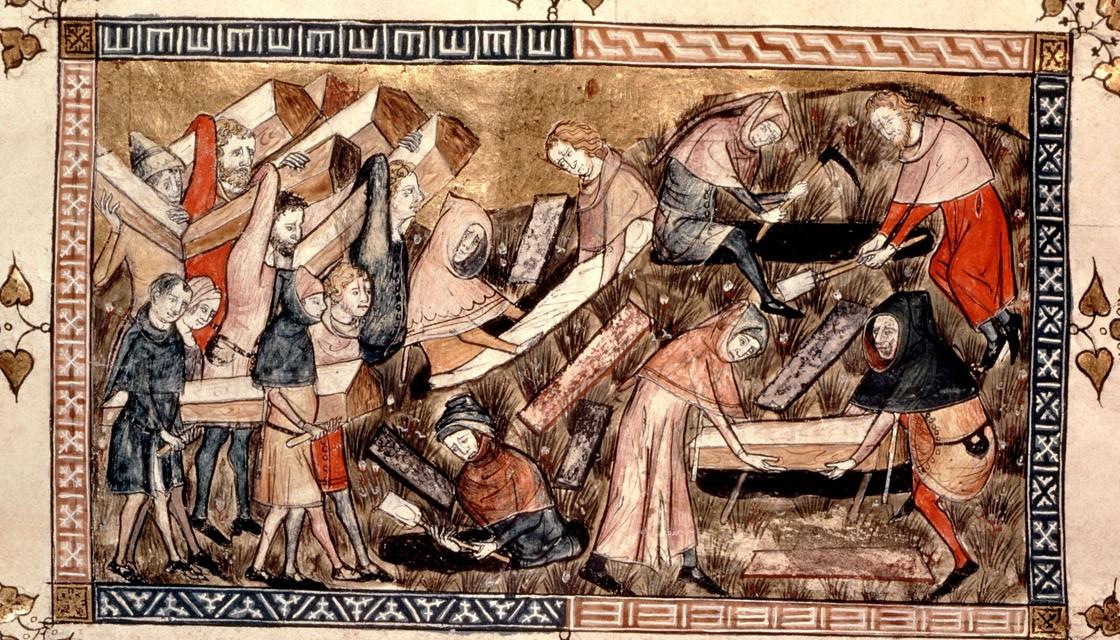If you thought living in the 2010s is bad, be glad you weren't around in the year 536.
A historian has named the year the worst in history, saying it kicked off a century of misery and despair for the human race.
What was then known as the 'Year after the Consulship of Belisarius' marked the "beginning of one of the worst periods to be alive" medieval historian Michael McCormick told magazine Science.
Sure, 2016 might have claimed the lives of David Bowie, Prince, George Michael, Muhammad Ali, Gene Wilder, Leonard Cohen, Fidel Castro and Carrie Fisher, but the events of 536 sparked a decade which would see about half the population of Europe wiped out - and suffering and desolation everywhere else.
New research has found it began with a volcanic eruption, probably in Iceland or North America. Strong winds carried the ash across the globe, plunging Europe - already in the so-called Dark Ages - into literal darkness in a cloud of "volcanic fog".
"During this year a most dread portent took place," Byzantine historian Procopius wrote at the time. "For the sun gave forth its light without brightness... and it seemed exceedingly like the sun in eclipse, for the beams it shed were not clear."

Crops failed across Europe, droughts were reported as far away as Chile, and temperatures dropped so far that snow fell during the Chinese summer. Irish records show bread couldn't be made between 536 and 539. Romans wondered if God had deserted them.
- Little warning for Aucklanders if eruption imminent
- Volcanic eruption: How would Auckland cope if one blew?
In 2013, one researcher suggested a piece of Halley's Comet may have broken off in its unusually bright pass of 530, slamming into the ocean in 536.
"There was, I think, a small volcanic effect," researcher Dallas Abbott of Columbia University told NBC News at the time. "But I think the major thing is that something hit the ocean."
Evidence of tiny marine organisms was found in Greenland ice cores dating to 536, which she says may have been blasted into the sky by the impact of a 600m-wide chunk of the comet.

But new analysis of ice cores in Greenland and Antarctica has uncovered a history of previously unknown climate activity over the past 2000 years that can be pinpointed with accuracy down to the month.
Volcanic glass was found in ice cores dating to 536, Science reports, which match others found in peat bogs in Europe. The particles resembled those found in Iceland, leading researchers to conclude that's where a massive volcanic explosion must have taken place. It cooled temperatures in Europe up to 2.5degC, leading to the coldest decade of the past 2300 years.
- Auckland Council report warns of horror dystopian future
- When the apocalypse is due, according to Isaac Newton
536 wasn't done however. Two more eruptions followed in 540 and 547 - the former probably in the tropics - and in between those, 'Justinian's plague' swept through the eastern part of the Roman Empire, then ruled by Justinian the Great.
The 540 eruption spewed more ash into the air than the 1815 Tambora eruption, which caused the infamous 'Year Without a Summer' across the northern hemisphere.

The ice cores show it took a century for Europe to recover, but even that came with a catch - there was a spike in atmospheric lead in 640, which historians say is a sign the economy was back in business (silver is smelted from lead ore). Another spike in 660 they say shows silver becoming the monetary standard, with gold becoming increasingly scarce - another sign things were getting back on track. Lead of course, as we know now, is not good for humans.
The same ice cores show lead, and therefore trade, vanished in 1349 - which although being year the Black Death hit Europe, historians say pales compared to the horrors faced in 536.
Newshub.
